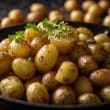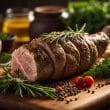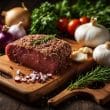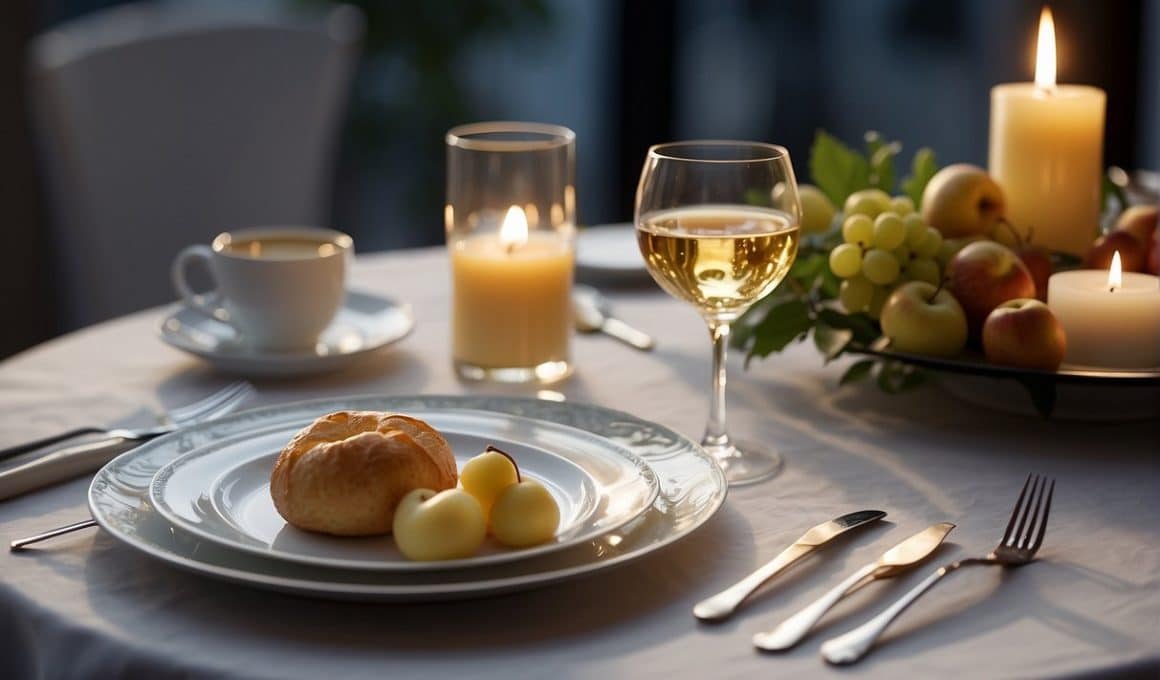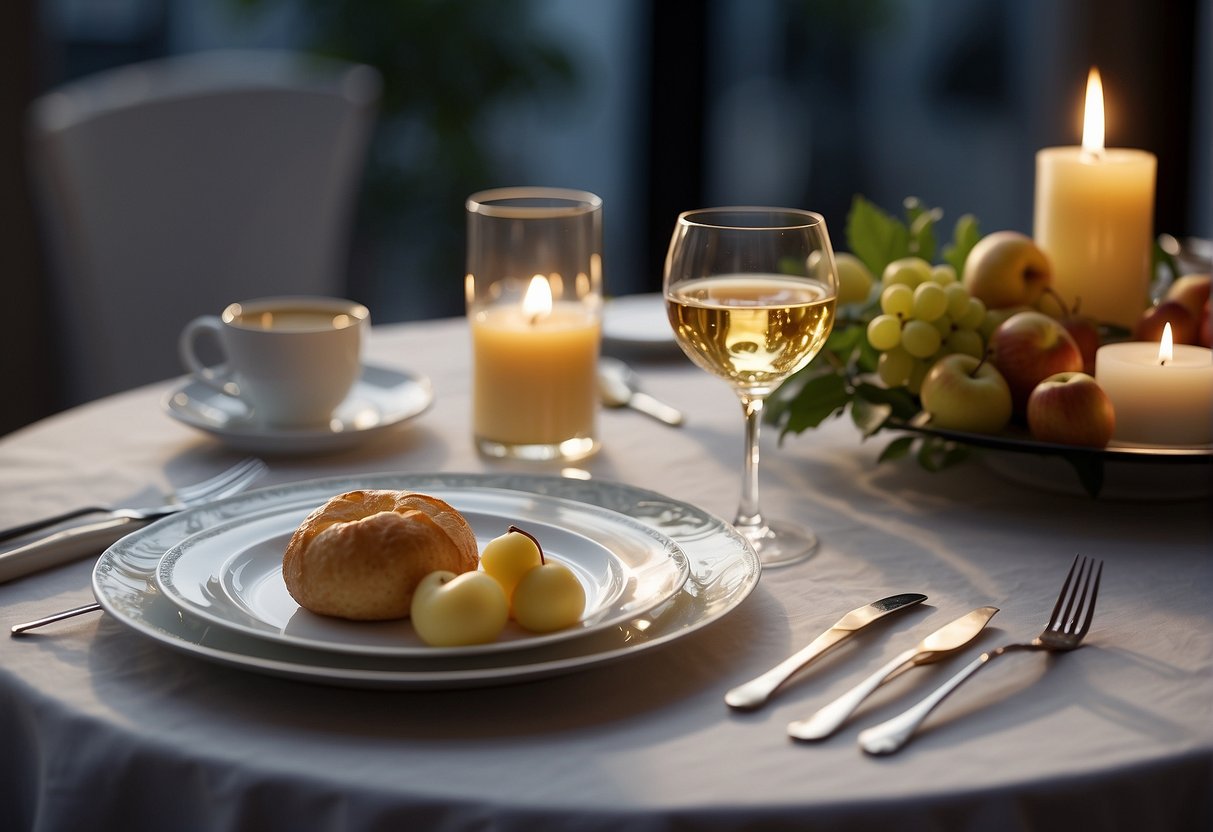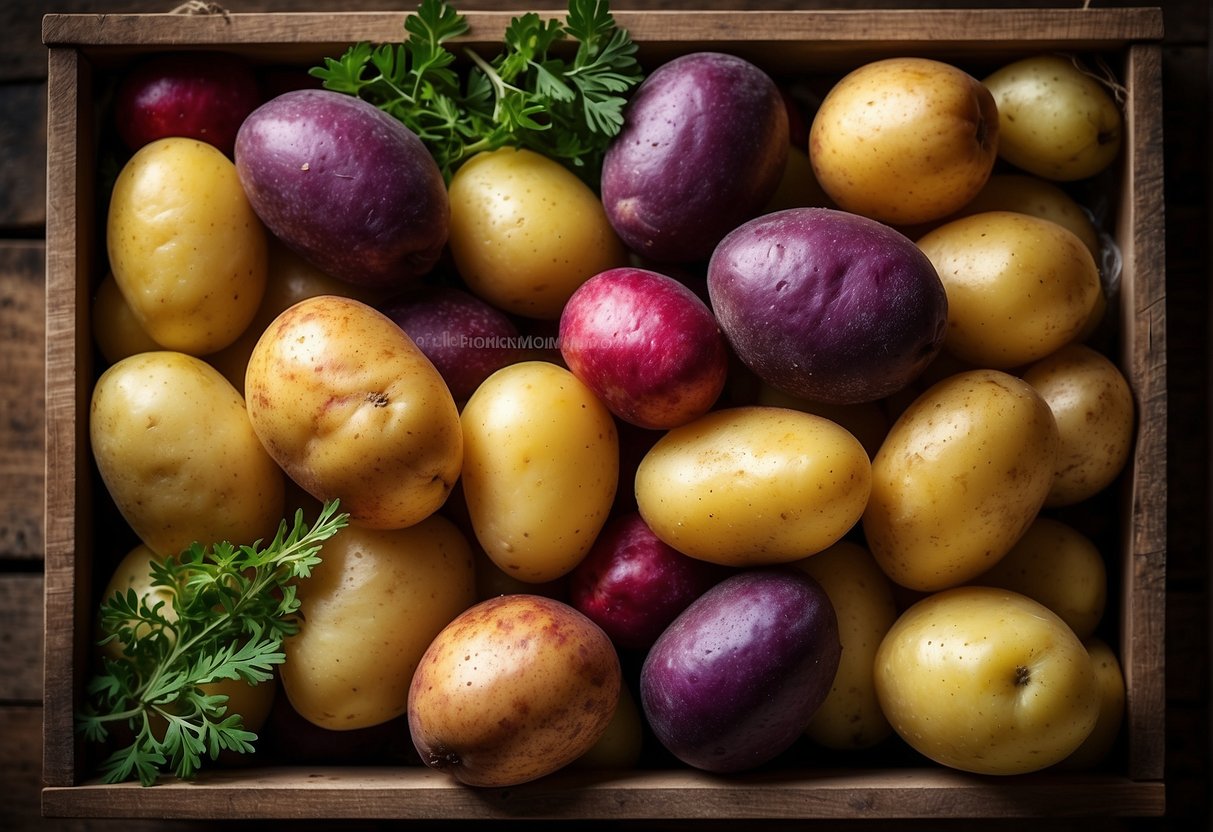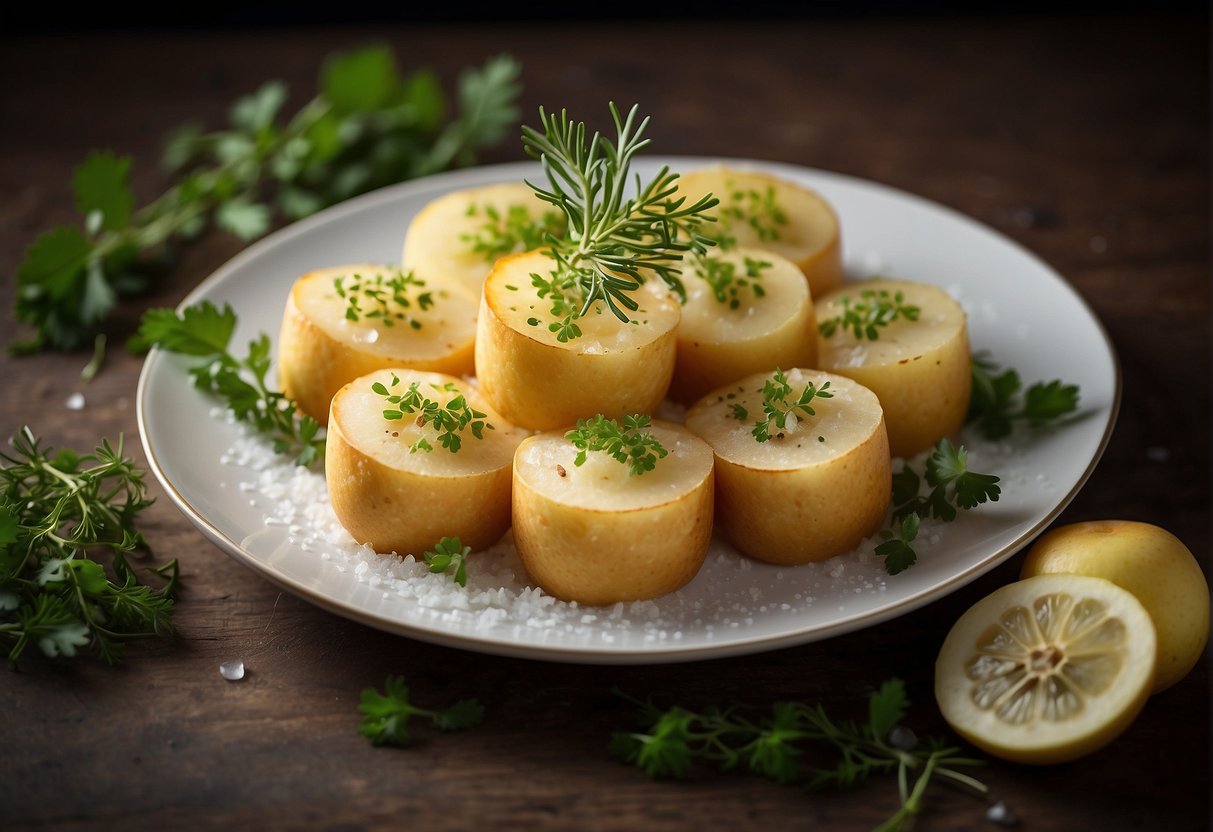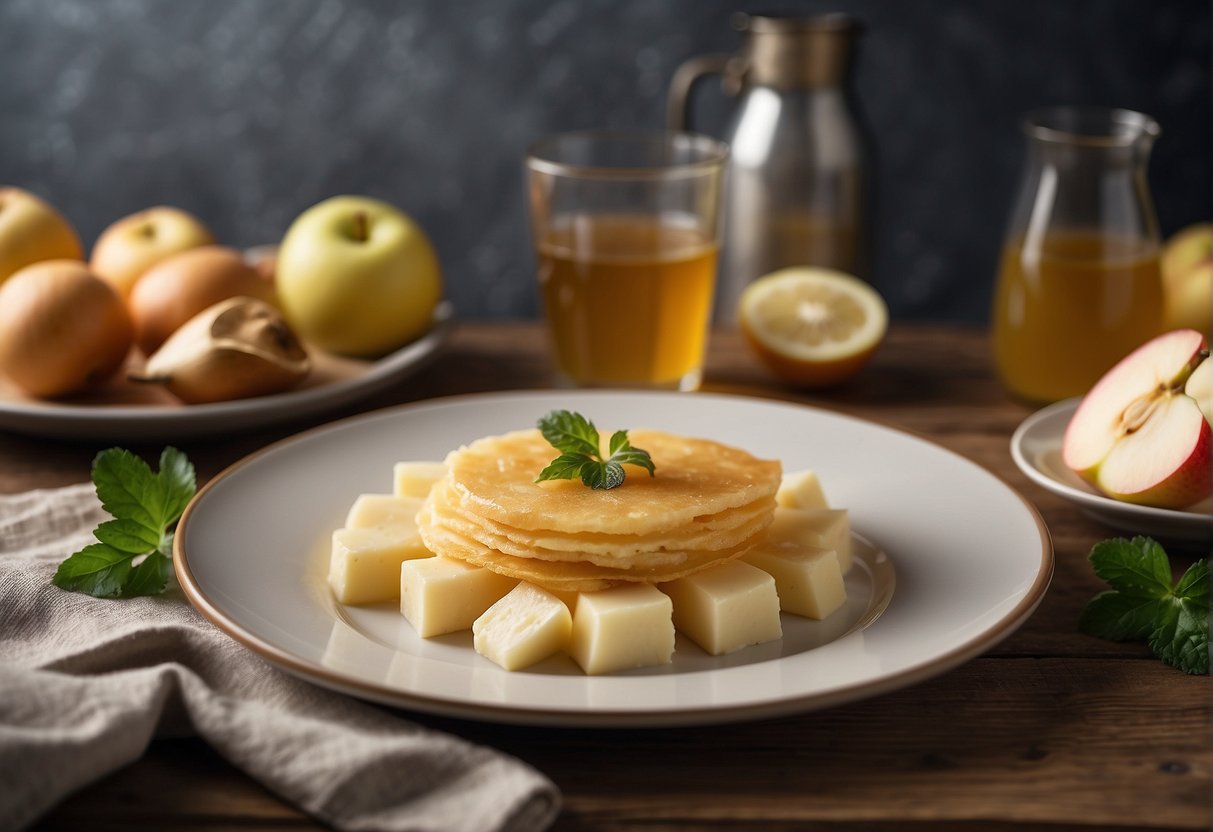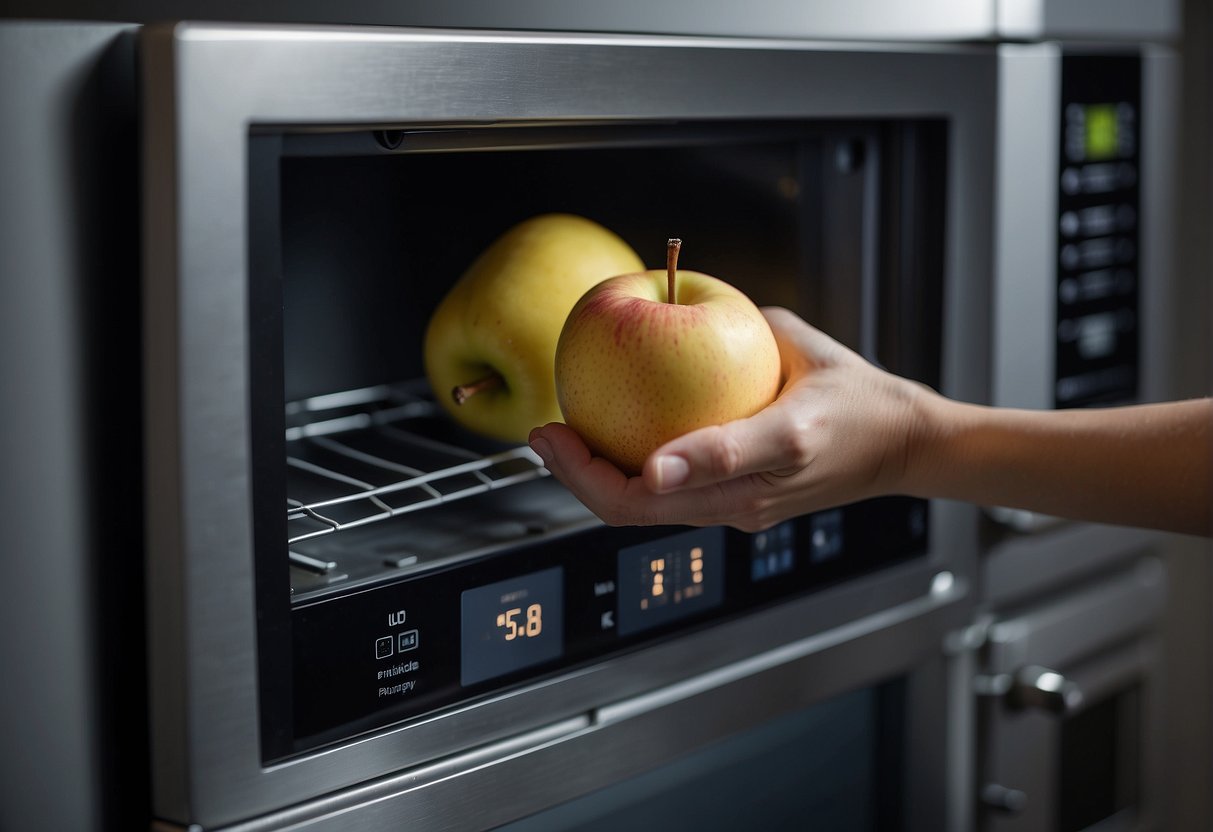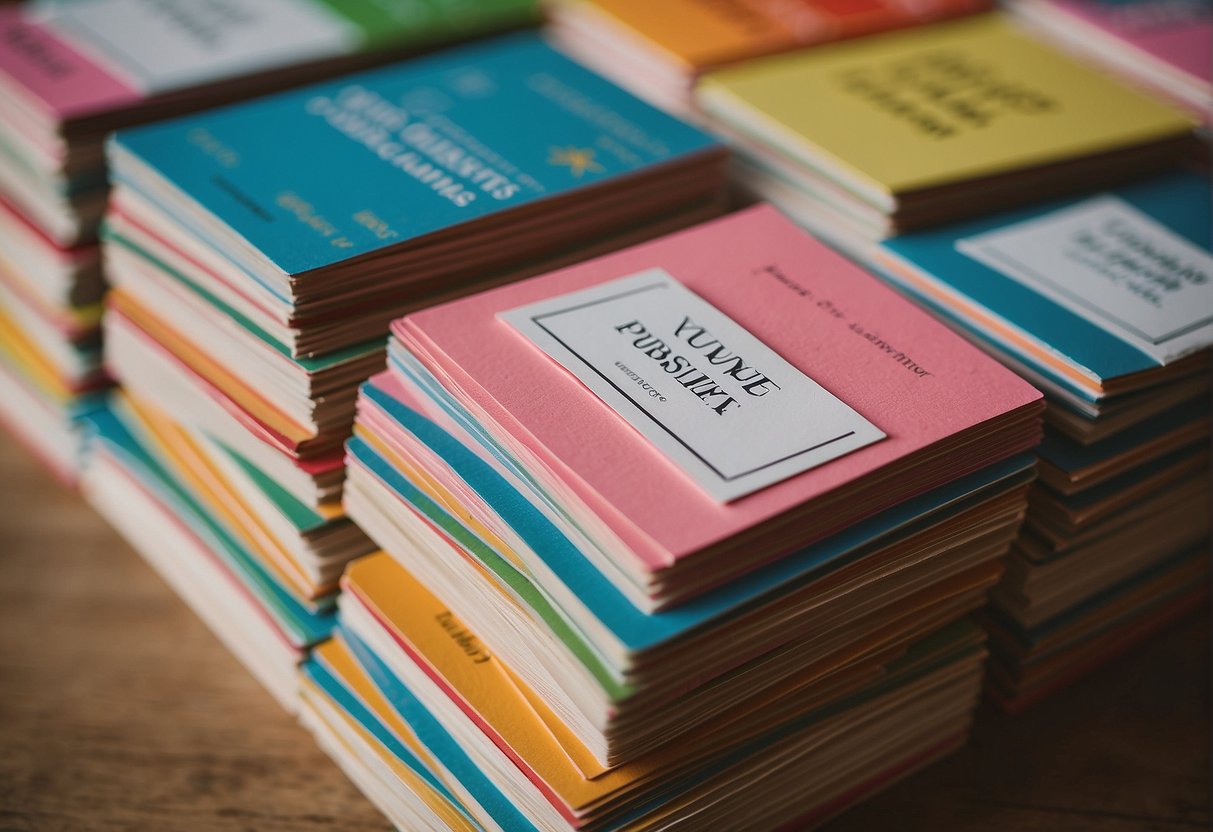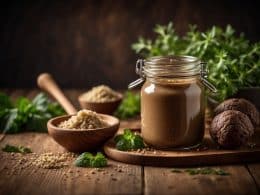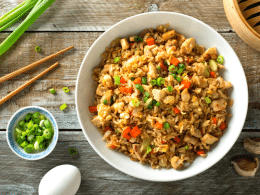Pomme parisienne, or Parisian potatoes, is a classic French culinary delight that adds a touch of elegance to any meal. These small, round potato balls are crafted using a melon baller, creating a unique and attractive shape that differs from your typical diced or sliced potatoes. The process transforms the humble potato into a sophisticated side dish that pairs perfectly with a variety of proteins and vegetables.
Mastering the art of pomme parisienne is not as daunting as it may seem. It all begins with selecting the right type of potato—a variety that is firm enough to hold its shape once scooped and that yields a creamy texture when cooked. These potato spheres are typically seasoned and roasted until they achieve a golden exterior while maintaining a fluffy and soft interior, making them as enjoyable to eat as they are to present on a plate.
Key Takeaways
- Parisian potatoes are a visually appealing, scoop-shaped side dish.
- The right potato variety and cooking method yield a fluffy inside and golden outside.
- Pomme parisienne is versatile and complements a range of main courses.
History of Pomme Parisienne
In my exploration of culinary history, I’ve discovered that Pomme Parisienne, also known as Parisian potatoes, has its roots deeply embedded in French cuisine. I understand that these small, spherical potatoes are traditionally scooped out with a melon baller. This technique not only gives the potatoes their distinctive shape but also adds a certain je ne sais quoi to the presentation.
From my research, I’ve learned that the term pommes de terre, which means “apples of the earth,” is the French name for potatoes. Pomme Parisienne, or literally “Parisian apples,” likely gained its moniker from being a favored side dish in Parisian bistros.
Here is a brief timeline of the Parisian potato:
- Origin: The exact origin date is unclear, but similar potato dishes date back to French cuisine in the 19th century.
- Popularity: Gained prominence in upscale Parisian establishments.
- Technique: Perfecting the melon-baller method became a mark of a skilled chef.
Traditionally, after the pommes parisiennes are scooped, they are cooked to achieve a tender inside and a crispy, golden exterior. My understanding is that French chefs have been preparing these potato balls in various forms—either roasted or sautéed in butter—and often accompanied by herbs like parsley for added flavor.
My take on the history of Pomme Parisienne is clear: it’s a dish that has stood the test of time, maintaining its place as a classic in French cuisine due to its unique appearance and versatility. It has certainly brought a touch of elegance to many plates across the world.
Ingredients and Varieties
In crafting the perfect Pommes Parisienne, I pay careful attention to the variety of potatoes and the quality of complementary ingredients. These elements are essential in achieving the balance between a buttery interior and a golden, crisp exterior.
Choosing the Right Potatoes
The selection of potatoes is pivotal. Maris Piper potatoes are a favored choice due to their fluffy texture when cooked. These potatoes hold their shape well, making them ideal for scooping into small balls. Other varieties may also work, but I always look for potatoes with similar qualities to Maris Piper to ensure consistency in texture.
Seasonings and Flavorings
Simplicity is key with seasonings. I use salt and freshly ground pepper to subtly enhance the natural potato flavors. For a more aromatic profile, fresh parsley and thyme can be finely chopped and added. The aim is to complement, not overpower, the delicate taste of the potatoes.
Butters and Oils
I often use melted butter for its rich flavor, creating a soft, velvety texture inside with a perfectly crunchy exterior. For a higher cooking temperature or a nuttier flavor, clarified butter works wonderfully as it resists burning. When opting for a lighter version, a mix of canola oil and a small amount of butter balances health concerns while maintaining a pleasant taste profile.
Preparation Techniques
In crafting Pommes Parisienne, precision in shaping and cooking the potato balls is crucial. I’ll guide you through making impeccably round potatoes, the right cooking methods, and effective draining and serving techniques.
Creating Perfect Potato Balls
To start, I use a Parisienne scoop or melon baller to carve out even spheres from peeled raw potatoes. Ensuring a firm grip, I press the tool into the potato and twist to release a smooth, rounded ball. I strive for uniformity in size to promote even cooking.
Cooking Procedures
I then place the potato balls into a large saucepan filled with cold water. This step is important as it helps to remove some of the starch and prevent the potatoes from sticking together when cooked. Once soaked, the potatoes are easier to fry evenly in a skillet or frying pan. For frying, I heat a mixture of butter and oil over medium heat, giving the potato balls a golden, crisp exterior while keeping the inside soft and fluffy.
Draining and Serving Methods
After frying, I carefully drain the potatoes on kitchen paper to remove excess oil. This ensures the final product isn’t greasy but retains the perfect texture. I serve them promptly while they’re still warm and crisp, usually accompanying a protein or as part of a more complex dish.
Serving Suggestions
Pomme Parisienne, elegant and delicious, serves as an excellent side dish that can elevate any meal. As I explore the best ways to serve these delicate potato balls, the key to an outstanding presentation lies in selecting the right pairing and garnish.
Traditional Pairings
In my experience, these buttery potato balls are most commonly paired with hearty meat dishes. They complement the richness of roast meats, particularly beef or lamb. For those who appreciate the classics, a plate of pomme Parisienne next to a succulent roast is a time-honored combination. The fluffiness of the potatoes provides a perfect balance to the savory depth of the meats.
Garnishes and Toppings
To bring out the full potential of pomme Parisienne, I always recommend a sprinkle of finely chopped parsley for a fresh, herbaceous kick. A light dusting of freshly ground black pepper adds a subtle warmth and rounds out the flavor profile. These garnishes not only enhance the taste but also create a more visually appealing dish. It’s these little touches that transform good cooking into great cuisine.
Nutritional Information
When I prepare Pommes Parisienne, I am mindful of the nutritional content present in the ingredients. Potatoes are the primary ingredient, and they provide a good source of complex carbohydrates, dietary fiber, and vitamins, such as vitamin C and vitamin B6. However, it’s important to note the method of preparation can significantly impact the nutritional value.
For instance, if butter, oil, or beef stock is used, as described in the Masterclass Potatoes recipe by James Martin, the fat content will increase. Specifically, butter contributes additional calories and saturated fats. When it comes to serving size, a typical preparation of Pommes Parisienne could contain:
- Calories: 150-200 per serving
- Carbohydrates: 20-30g
- Dietary Fiber: 2-3g
- Proteins: 2-4g
- Fats: 5-10g (depending on added butter or oil)
A garnish with herbs like thyme or parsley will add minimal calories but can provide a boost in antioxidants, flavor, and aesthetic appeal. The choice of additional ingredients such as garlic or shallots, mentioned in recipes like Meeesh’s Kitchen, will contribute minor amounts of micronutrients and some fiber but will not significantly alter the nutritional makeup.
In making this dish, choosing the type of potato and additional ingredients is crucial for managing the nutritional profile. Opting for less butter or oil can make it a healthier option while still enjoying the texture and flavor characteristic of this classic French side dish.
Storage and Reheating
When I make Pommes Parisienne, also known as pommes noisette when they’re smaller, I ensure that any leftovers are stored properly. To keep them fresh, I place the cooled potato balls in an airtight container. I’ve found they can be refrigerated like this for up to three days.
For reheating, my method ensures that the potatoes retain their crispness. I preheat my oven to 350°F (175°C). Here’s a simple breakdown:
- Spread the potatoes on a baking sheet.
- Warm them for about 10-15 minutes or until they’re heated through.
If I’m short on time, I sometimes reheat the Pommes Parisienne in the microwave. I use 50% power to avoid making them too soft:
- Arrange the potatoes on a microwave-safe dish.
- Heat in 30-second intervals, checking for warmth.
If I’m considering freezing, I flash freeze them first on a baking sheet before transferring to a freezer bag. This prevents them from sticking together. When I’m ready to enjoy them again, I reheat the frozen pommes directly in the oven at 350°F until they’re warm and crisp, usually for about 25-30 minutes.
These methods allow me to savor Pommes Parisienne even on a busy day without losing the quality of this classic French side dish.
Frequently Asked Questions
In this section, I cover some of the most common questions about Pomme Parisienne, a classic French potato dish. Whether you’re a seasoned chef or new to cooking, these answers will guide you through the process of making this elegant side.
How do you prepare a classic Pomme Parisienne dish?
To make a classic Pomme Parisienne dish, I start by peeling potatoes and using a melon baller to scoop out round balls. I then blanch the potato balls in salted water, followed by sautéing them in butter until they’re golden brown.
What ingredients are needed for Pomme Parisienne?
The ingredients I need for Pomme Parisienne are simple: potatoes, salt, butter, and often herbs like parsley and thyme for added flavor. Some cooks also like to include garlic or nutmeg in their recipes.
Can you provide a simple recipe for making Pomme Parisienne?
I certainly can. After scooping out the potato balls, I blanch them for 2-3 minutes in boiling water. I then drain and sauté them in butter over medium heat, tossing regularly until they’re golden and crisp. It’s a simple but delicious preparation.
How do you pronounce ‘Pomme Parisienne’ correctly?
The correct pronunciation is “pom pa-ree-zyen.” It’s important to emphasize the second syllable in “Parisienne” while speaking with a soft ‘s’ sound.
What is the traditional cooking method for Parisienne potatoes?
The traditional cooking method involves blanching the potato balls, then sautéing them in butter until they are evenly browned and tender. They should be crispy on the outside and soft on the inside.
What are some tips for cutting potatoes into perfect balls?
I recommend using a Parisienne scoop or a melon baller for consistent size and shape. It’s important to apply even pressure and rotate the scoop smoothly into the potato. I also suggest choosing potatoes that are large and firm to make the process easier.


